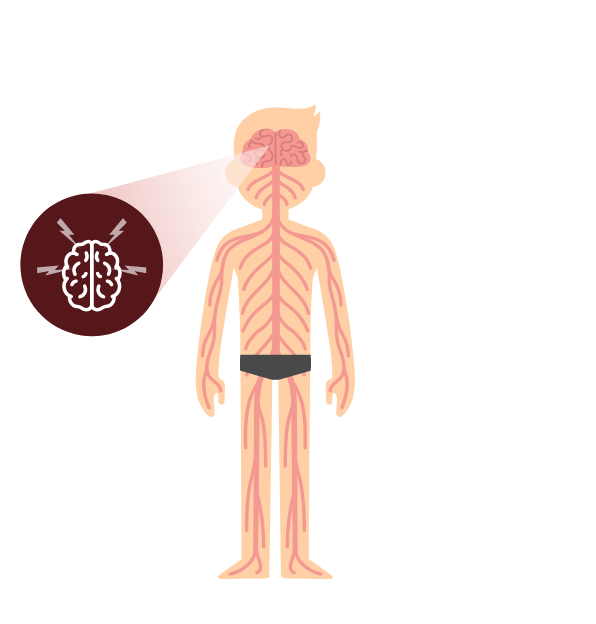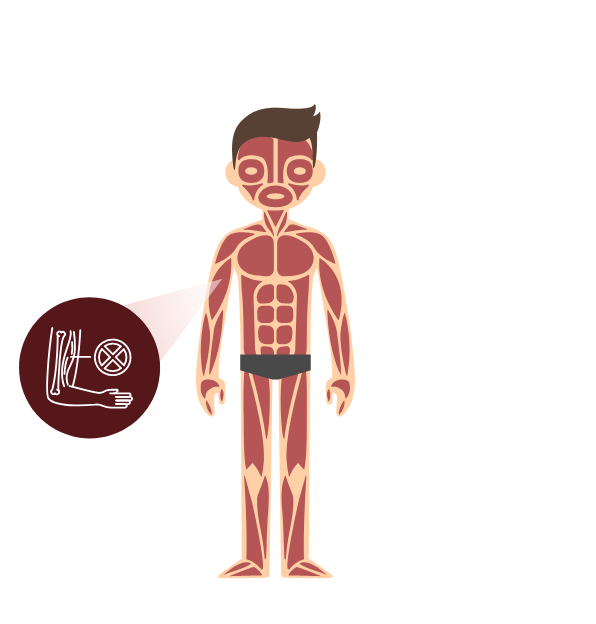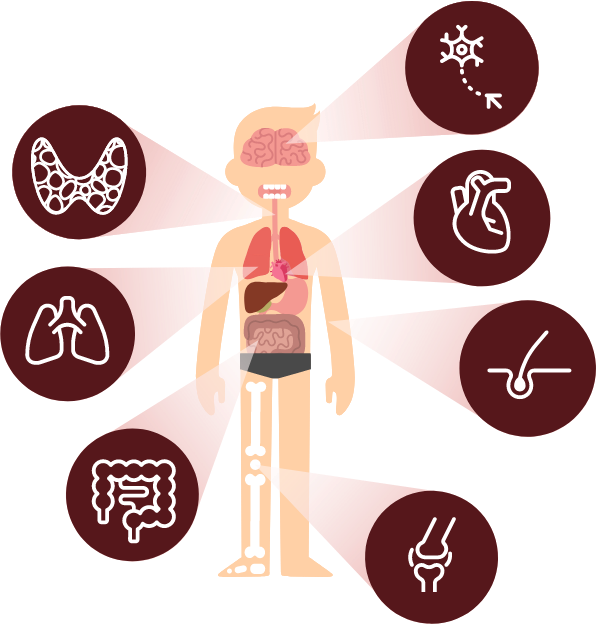The umbilical cord has precious and highly potent stem cells
that are not only being used for blood cancers, blood diseases and immunological disorders, but are also being actively studied for their potential use in regenerative medicine.

The umbilical cord has precious and highly potent stem cells
that are not only being used for blood cancers, blood diseases and immunological disorders, but are also being actively studied for their potential use in regenerative medicine.
These stem cells are being researched today as investigational treatment for¹⁻⁸








Reasons To Bank Cord Lining (CL) and Wharton’s Jelly (WJ) For The Future⁹⁻¹⁶
Unlike cord blood stem cells, cord lining and WJ’s stem cells are still being studied for various treatments. A large number of clinical studies are being done with these highly potent stem cells.
- Amyotrophic Lateral Sclerosis (ALS) (Progressive Nervous System Disorder)
- Alzheimer’s
- Arthritis
- Autism
- Cerebral Palsy
- Crohn’s Disease
- Diabetes
- Liver Cirrhosis
- Cartilage Repair
- General Surgery
- Orthopaedic Surgery
- Tendon Repair
- Urology
- Wound/Soft Tissue Repair
- Eye Injury

Medical Challenges For Stem Cell Therapy¹⁷⁻¹⁹
The wonders of stem cells are continuously being discovered each year.
With advanced technologies and dedicated scientists, there are a lot of things that can be done with these highly potent cells. More and more clinical studies are being done to take advantage of these unique stem cells.
However, there are some challenges concerning stem cell therapies.

Ethical and safety concerns
Ethical concern is mainly for embryonic stem cells (ESCs) because of the way they are retrieved from an embryo. Stem cell therapy in general, needs to be closely monitored and policed to ensure it is ethical and safe, beginning from the way cells are being extracted from the sources to transplantation into a patient.

Immunological rejection
Stem cell transplant can trigger an immune reaction because the body could recognise the transplanted cells as foreign material. This can result in rejection of transplanted stem cells.

Understanding the mechanism in animal models
New procedures are always scary especially when they are not properly understood. It is crucial to understand the way stem cells work in animal models first, prior to any further studies in humans.

Efficiency of stem-cell directed formation
Before putting any new and fully functioning organs made through stem cell therapy, they need to be analysed for their efficiency. Millions of functioning and biologically accurate cooperating cells would be required for a successful treatment.
Fewer yield of HSCs compared to bone marrow (BM) and peripheral blood stem cells (PBSC) is one of the main challenges for cord blood stem cell therapy.
Compared to BM and PBSC, cord blood has less amount of HSCs, making transplant treatment sometimes requiring the use of double cord blood units.
Scientists are currently working on a method to increase the HSC numbers in UCB. Stem cell based treatment is still new and challenging even after several decades of experiments.
Although there are many obstacles along the way, the potential these stem cells have keeps growing each time. Stem cells treatment has a bright future especially in personalised medicine and regenerative medicine.



